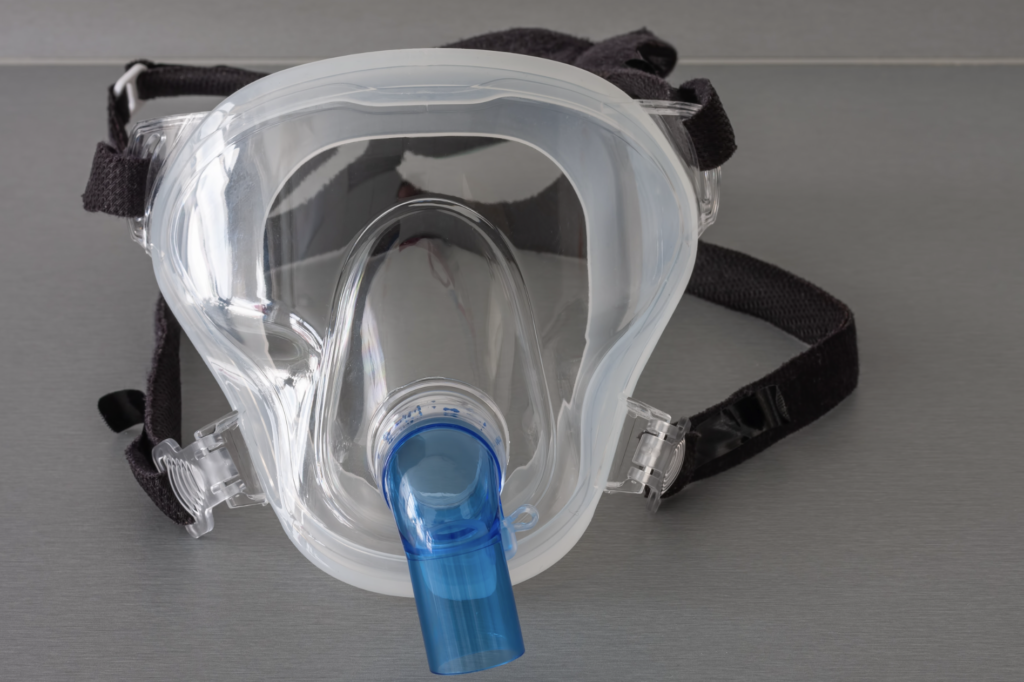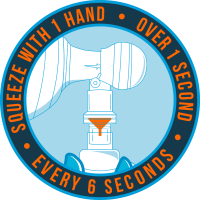Quick Summary / Key Takeaways
- NIV delivers positive pressure through a mask or helmet, avoiding intubation.
- Landmark RCTs show NIV reduces mortality and intubation in COPD exacerbations and cardiogenic pulmonary edema.
- Evidence for hypoxemic respiratory failure (e.g., ARDS, pneumonia) is mixed — failure rates are higher, and delayed intubation worsens outcomes.
- Patient selection, mask fit, tolerance, and close monitoring in the first hours determine success.
- High-flow nasal oxygen (HFNO) and helmet NIV are expanding the non-invasive toolkit, particularly for hypoxemic failure.
Table of Contents
SECTION 1: Basics & Evidence
1. What is non-invasive ventilation and how does it work?
2. What conditions have the strongest evidence for NIV?
SECTION 2: Risks & Limitations
3. What are the main risks and limitations of NIV?
4. When should clinicians abandon NIV and intubate?
SECTION 3: Practical Aspects & Innovations
5. What factors determine NIV success at the bedside?
6. How is NIV evolving with new technology?
SECTION 1: Basics & Evidence
FAQ 1: What is non-invasive ventilation and how does it work?
Non-invasive ventilation (NIV) refers to the provision of positive-pressure ventilatory support through an external interface, typically a facemask or helmet, rather than an endotracheal tube. One popular mode is bilevel positive airway pressure (BiPAP), which delivers different inspiratory and expiratory pressures. The physiological benefits include unloading of fatigued respiratory muscles, improvement of alveolar ventilation, reduction in work of breathing, and stabilization of alveoli by maintaining positive pressure.
Compared to invasive mechanical ventilation, NIV helps avoid complications such as ventilator-associated pneumonia, airway trauma, and sedation-related delirium. Its use is most effective in patients with intact airway reflexes and preserved consciousness who can cooperate with the mask or helmet. The success of NIV lies in its ability to bridge acute respiratory crises without subjecting patients to the risks of intubation.
Takeaway: NIV provides the physiological benefits of positive pressure ventilation while avoiding many of the complications of intubation.
FAQ 2: What conditions have the strongest evidence for NIV?
The strongest evidence is for two conditions: acute exacerbations of COPD with hypercapnic respiratory failure, and acute cardiogenic pulmonary edema (CPE). The landmark trial by Brochard et al. (NEJM 1995) demonstrated that NIV significantly reduced the need for intubation and improved survival in COPD exacerbations. Meta-analyses and Cochrane reviews confirm consistent reductions in mortality, intubation, and hospital length of stay in this population.
For CPE, randomized trials and meta-analyses show that NIV improves oxygenation and reduces intubation rates, with some studies suggesting improved survival (Rochwerg, et al. 2017). Evidence for hypoxemic respiratory failure not caused by cardiogenic edema (e.g., pneumonia, ARDS) is mixed. Failure rates are higher, and observational studies suggest that delayed intubation in these patients worsens mortality. More recently, helmet NIV has shown promise in ARDS, as demonstrated in the Patel et al. JAMA 2016 trial, which reported reduced intubation rates and improved survival compared to facemask NIV.
Takeaway: NIV is best supported for COPD and CPE. Evidence in patients with hypoxemic respiratory failure is evolving.
SECTION 2: Risks & Limitations
FAQ 3: What are the main risks and limitations of NIV?
Despite its benefits, NIV is not without risks. Aspiration remains a concern, especially in patients with impaired airway reflexes or vomiting. Mask pressure can cause skin breakdown, particularly on the nasal bridge, and gastric insufflation may lead to discomfort or increase aspiration risk. Patient discomfort and anxiety can lead to intolerance, requiring sedation, which itself increases risks. Perhaps the most significant limitation is the potential for delayed recognition of NIV failure. Prolonged unsuccessful attempts can worsen hypoxemia, hypercapnia, and hemodynamic instability.
NIV is contraindicated in patients with coma, inability to protect the airway, copious secretions, or severe facial trauma. It also requires specialized staff training and close monitoring, which may limit its application in resource-limited settings.
Takeaway: NIV is safe when applied appropriately, but delayed intubation can lead to worse outcomes.
FAQ 4: When should clinicians abandon NIV and intubate?
The decision to intubate should be based on careful monitoring during the first hours of NIV therapy. Indicators of failure include persistent or worsening hypoxemia, rising PaCO₂ with acidosis, inability to tolerate the interface, deteriorating mental status, or cardiovascular instability. Improvement in respiratory rate, gas exchange, and patient comfort within the first 1–2 hours strongly predicts success, while failure to improve should prompt intubation.
Delayed intubation after failed NIV is consistently associated with higher mortality. This is especially relevant in hypoxemic respiratory failure, where prolonged NIV trials can worsen outcomes. Worse outcomes may be due to a mechanism known as Patient self-inflicted lung injury (P-SILI) (Brochard, et al. 2017), in which a patient’s strong respiratory drive can lead to worsening of acute lung injury. Guidelines recommend early recognition of failure and a low threshold for intubation in non-COPD, non-CPE patients.
Takeaway: The first hours are critical — rapid improvement predicts success; lack of improvement demands intubation.
SECTION 3: Practical Aspects & Innovations
FAQ 5: What factors determine NIV success at the bedside?
Success depends on patient selection, interface fit, staff experience, and monitoring. Patients must be alert enough to cooperate, able to clear secretions, and hemodynamically stable. Mask fit is critical: leaks reduce efficacy and increase discomfort. Helmets may improve tolerance and allow prolonged use but require specific ventilator settings.
Clinicians must monitor closely during initiation. Improvement in respiratory rate, gas exchange, and comfort within the first 60–120 minutes predicts continued success. Failure to improve should not lead to prolonged trials but should trigger reconsideration of intubation. Experienced staff and protocols greatly improve outcomes, underscoring the importance of institutional training.
Takeaway: Success with NIV is determined early and depends on the right patient, right device, and skilled monitoring.
FAQ 6: How is NIV evolving with new technology?
NIV technology is rapidly advancing. Helmet interfaces, increasingly studied in ARDS, improve comfort and reduce air leaks. High-flow nasal oxygen (HFNO) has emerged as a complementary tool, offering some benefits of NIV with greater comfort, although it does not provide ventilatory assistance. Hybrid approaches combining HFNO and NIV are being explored for hypoxemic respiratory failure.
Smart ventilators with automated leak compensation, improved synchronization algorithms, and remote monitoring capabilities are being developed. In chronic care, telemonitoring and cloud-based adherence tracking are transforming the management of sleep-disordered breathing and obesity hypoventilation. These innovations expand the reach of NIV but also emphasize the need for rigorous evaluation to ensure safety and effectiveness.
Takeaway: NIV is evolving into a more sophisticated and patient-tailored therapy — but evidence-based application remains key.
References
Brochard L, Mancebo J, Wysocki M, et al. Noninvasive ventilation for acute exacerbations of chronic obstructive pulmonary disease. N Engl J Med. 1995;333:817–822.
Rochwerg B, Brochard L, Elliott MW, et al. Official ERS/ATS clinical practice guidelines: noninvasive ventilation for acute respiratory failure. European Respiratory Journal 2017 50(2): 1602426; DOI: https://doi.org/10.1183/13993003.02426-2016.
Brochard L, Slutsky A, Pesenti A. Mechanical Ventilation to Minimize Progression of Lung Injury in Acute Respiratory Failure. Am J Respir Crit Care Med. 2017 Feb 15;195(4):438-442.
Patel BK, Wolfe KS, Pohlman AS, et al. Effect of Noninvasive Ventilation Delivered by Helmet vs Face Mask on the Rate of Endotracheal Intubation in Patients With Acute Respiratory Distress Syndrome: A Randomized Clinical Trial. JAMA. 2016;315(22):2435–2441.

